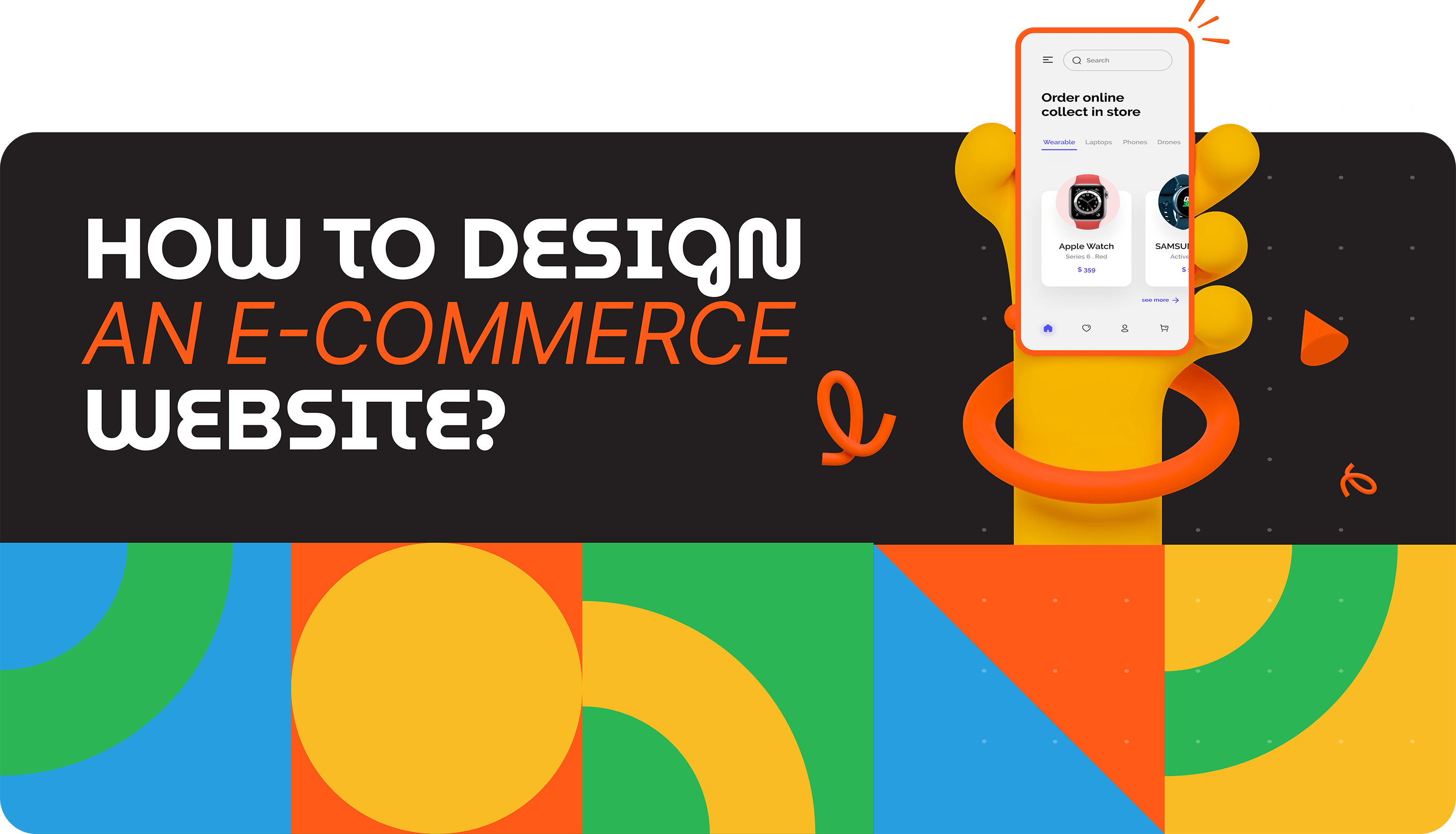
How to Design an E-Commerce Website
You don't truly exist if your business doesn't have a website. Since the majority of consumers now shop online, it is practically required for companies to have a website that is created with their target audience in mind.
Your website is the face of your business. Consequently, your landing page must clearly present the goods or services you provide, and be practical and user-friendly.
Imagine entering a store where the shelves are empty and the ceiling lights are flickering. Not a fun experience, right? Thus, using the most up-to-date user-friendly technologies and interface, your customers' online shopping experience should be seamless from accessing your site to making purchases.
We've compiled a set of recommended practices to follow in order to help you design an awesome website for your customers.
■ Keep it simple
Simplicity is always the best option when it comes to developing an e-commerce website. The more elements and pop-ups you have on your website, the less emphasis is placed on the website's main goal, which is closing a sale. A lot of elements are unnecessary because they only serve as a source of distraction. Keep your design simple, uncluttered, and focused on the sale.

■ Thinks as a website visitor
You must think like your audience if you want your e-commerce website design to resonate with them. In the end, there are only a few things your potential customers are looking for in an online buying experience — a well-designed website that is easy to navigate.
Think as a visitor. What kind of design will be the most convenient to use? What layout will be the easiest to navigate? How can the checkout process be simplified? When you approach business from your client's perspective, you may foresee their demands and then create your website to satisfy their needs.
■ Prioritize branding
When shopping online, people prefer to buy products from well-known brands rather than faceless e-commerce sites that look like a place to steal their credit card information.
You must give your branding some serious attention if you want to establish the trust necessary to generate significant sales for your e-commerce firm. Your brand represents who you are as a business, what you stand for, and how you differ from your competitors. Your brand will bind you to your audience and help generate sales.
■ Make colors your advantage
If you want to have a successful e-commerce website, take advantage of different colors and the emotions they can evoke.
For instance, use a bold color like red to make the purchase button stand out if you want them to make a purchase. Inspiring feelings of passion and excitement, a red ‘purchase’ button can help you boost conversions dramatically. Alternatively, if you want to improve your credibility, add blue to your website's design. The color blue is popular in the business world since it has been found to promote the feeling of trust.
In fact, color is one of your most powerful design tools, and if you know how to apply it, you can significantly improve your e-commerce design.
■ Make your website look professional
The main purpose of your e-commerce website is to make visitors purchase from you. Make your website look professional, as you are asking your customers for sensitive information, such as credit card details. They must feel secure while sharing this data with you.
Building trust with your clients requires investing in a good website, and establishing that trust is essential if you want your e-commerce store to be successful. The key is that having a professional web design is the best way to tell your audience that you take yourself and your business seriously.

■ Use high-quality pictures
Building confidence and trust begins with having high-quality photos of your products taken from a variety of perspectives. Your customers will be more inclined to buy something from you if they are sure about what they are buying. And they will be less likely to make the purchase if there are no photographs of the goods they want to buy (or if there is just one, poor-quality image).
Have a stock of high-quality photos of whatever you're offering on your e-commerce website as a favor to yourself. Your conversion rates will be gratifying.
■ Make navigation and checkout easy
Make it simple for your customers to navigate through your product categories and pages, as well as browse and filter your product selection by attributes like color or size. Make sure the checkout page design is clear, uncomplicated, and easy to use. Provide the option of logging in or using the guest checkout on your website. Make every step of the procedure clear, including the information you need to process the purchase, the various shipping options available and their costs, and what to do if the customer needs to make a return.
■ Add social proof
Find ways to highlight the feedback you've received from your consumers when you're developing your e-commerce website. Include an area for reviews of your products, add a testimonials area with client photographs, and a comment or two about their positive interactions with you. Request reviews from customers to post on your site.
Conclusion
Designing an e-commerce website might be challenging, but now that you are aware of the top e-commerce web design ideas, you can create a website that not only looks fantastic but also converts like crazy.
